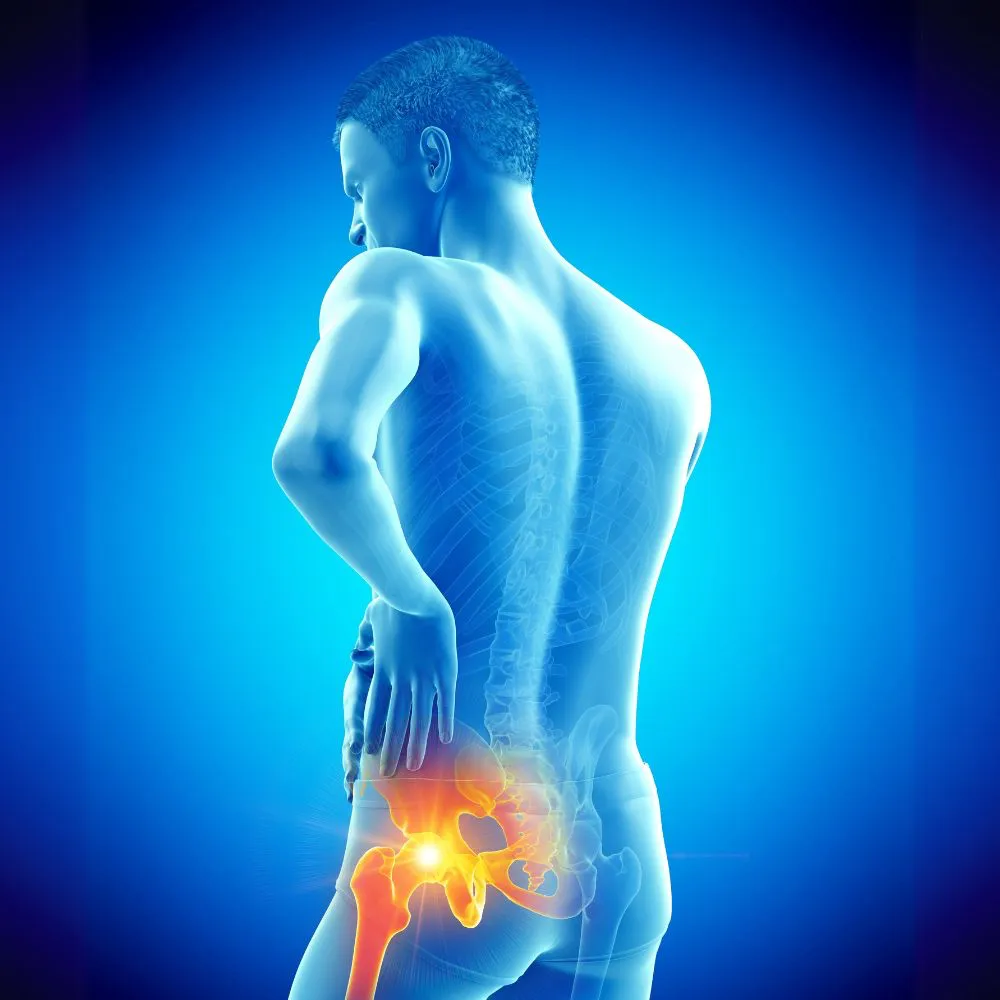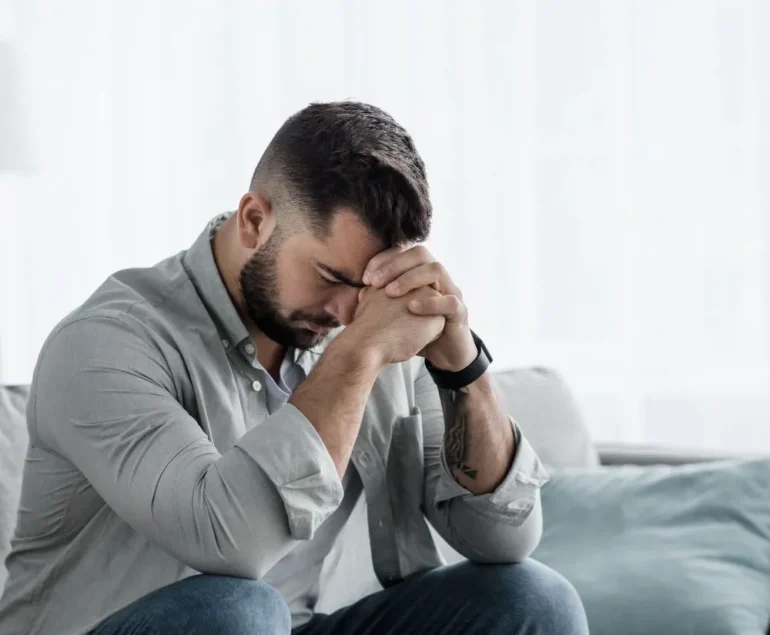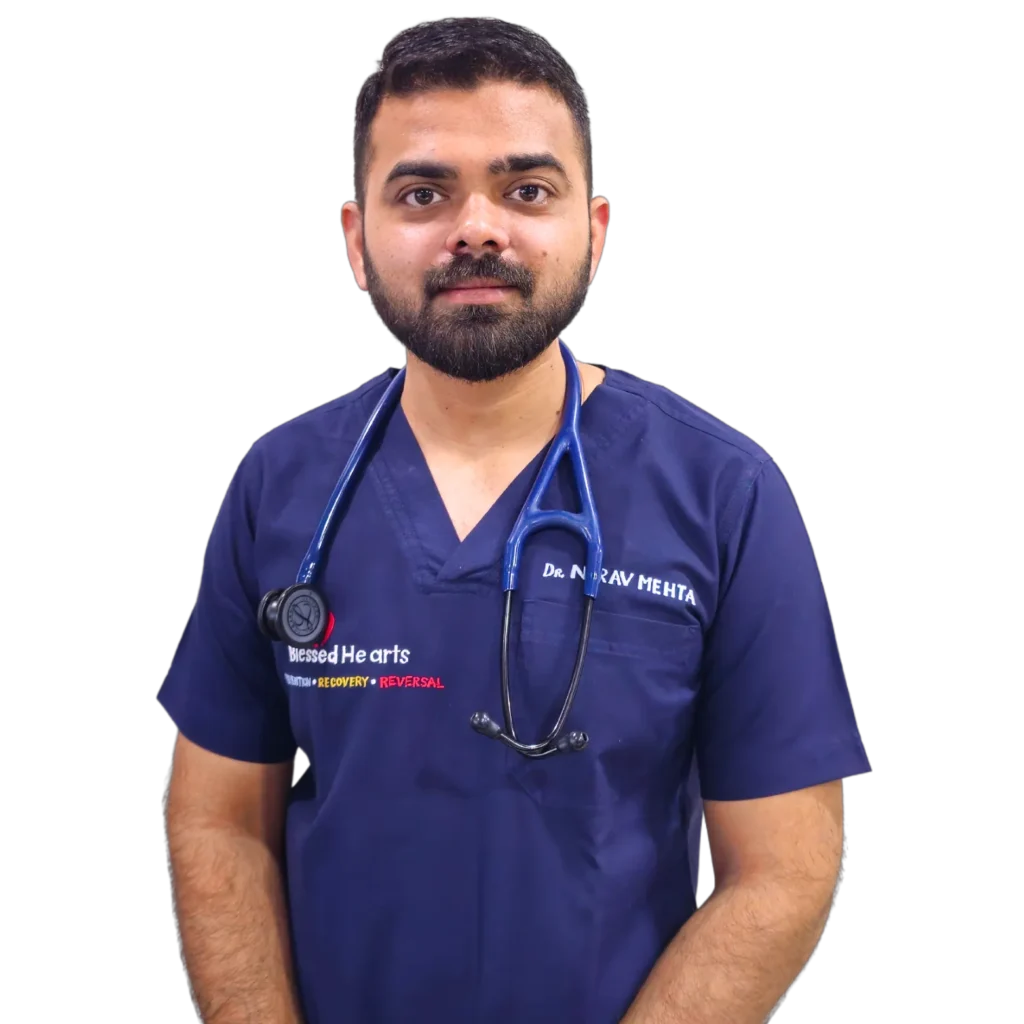Blessed Hearts Clinic – Best Avascular Necrosis (AVN) Treatment in Rajkot
Welcome to Blessed Hearts Clinic, a trusted destination for advanced and compassionate care. If you or a loved one is dealing with Avascular Necrosis (AVN), also known as osteonecrosis, we are here to provide effective treatment options that promote recovery and improve quality of life.
What is Avascular Necrosis ?
Avascular necrosis, also known as osteonecrosis, happens when bone tissue dies due to a lack of blood supply. In the hip, this typically affects the femoral head, causing progressive bone damage that can ultimately lead to joint collapse and severe arthritis
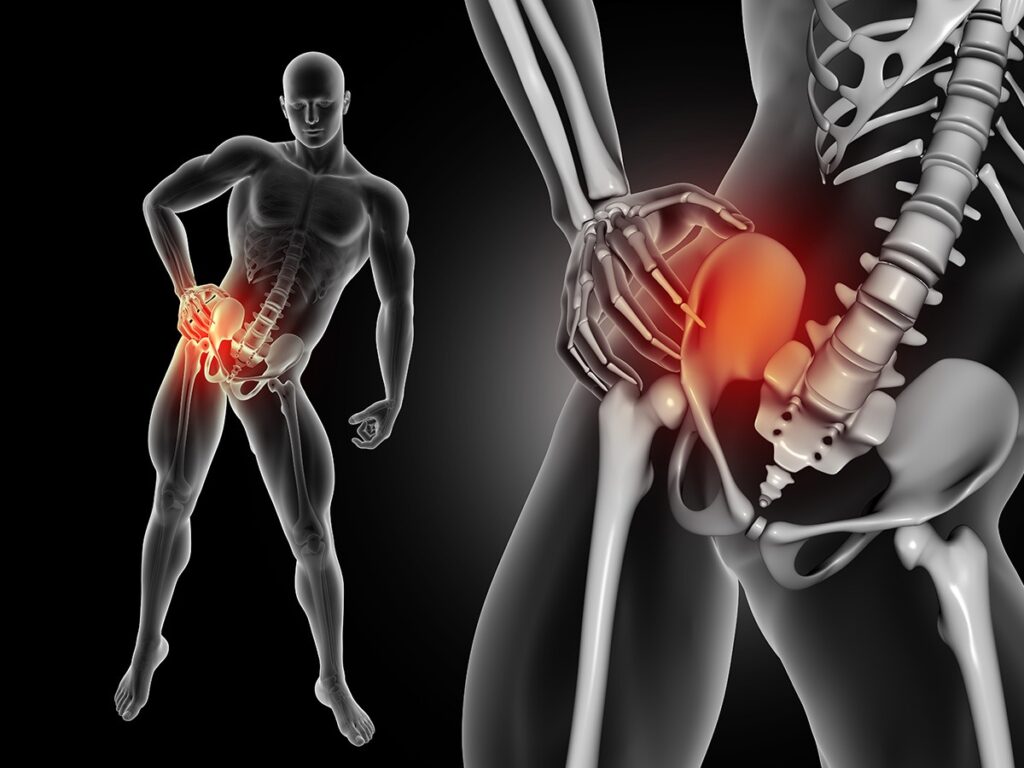

Pathophysiology of Avascular Necrosis of Hip
Imagine the intricate network of blood vessels that nourishes your bones. Disrupting this network in the femoral head leads to a lack of oxygen and nutrients reaching the bone tissue. This deprivation causes the bone cells to die, leading to the characteristic weakness and pain associated with AVN.
The initial stages of AVN might not present any noticeable symptoms. However, as the bone weakens and starts to collapse, you might experience:
Pain in the groin, hip, or buttock: This pain can be dull and achy initially, gradually worsening and becoming more constant. It might even radiate down the thigh towards the knee.
Stiffness in the hip: Reduced range of motion in the hip joint becomes more apparent, making it difficult to walk, climb stairs, or bend down.
Limping: As pain intensifies, you might find yourself limping to alleviate pressure on the affected hip.
Causes of AVN Hip Joint
Traumatic:
AVN can occur when trauma interrupts blood flow to the femoral head. For instance, it may develop after a hip fracture, dislocation, or previous hip surgery. Traumatic AVN of the hip is not as common as nontraumatic AVN.
Non-Traumatic AVN
Nontraumatic risk factors have been associated with AVN of the hip, in particular, the prolonged use of corticosteroids and excessive alcohol use.
Together, these two factors account for over 80% of nontraumatic AVN of the hip cases.
Other risk factors include, but are not limited to, the following:
- Smoking
- Sickle cell disease
- Systemic lupus erythematosus (SLE)
- Gaucher disease
- Previous radiation therapy
- Previous chemotherapy
- Decompression sickness
- HIV infection
- Pancreatitis
- Chronic liver disease
- Organ transplantation
- Certain blood clotting disorders, including thrombophilia (in which your blood clots too easily)
- Hyperlipidemia (abnormally high levels of lipids in the blood)
- Gout
- COVID-19
Diagnosing AVN
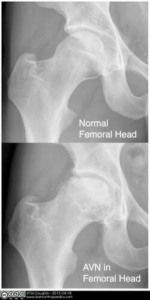

To diagnose AVN of the hip, doctor will review your medical history, perform a physical exam, and order one or more tests. Doctor may begin to make a diagnosis by asking you about your symptoms, including when they began and whether they have worsened over time. Doctor will also review your medical history to see if you have any risk factors for AVN, such as a previous hip injury, corticosteroid use, and whether you have a medical condition associated with AVN of the hip. During the physical exam, your doctor will closely examine your hip and move it around to check whether certain positions cause pain.Imaging tests such as X-rays and MRI scans of the hip are necessary to confirm a diagnosis. Doctor may also order blood work to help determine the underlying cause of AVN. If you are diagnosed with AVN of the hip, doctor will determine the stage of the condition. Knowing whether the condition is in its early or late stages helps doctor select the best treatment for each patient.
Stages of AVN
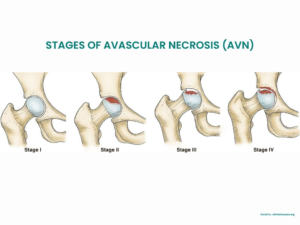
Avascular necrosis (AVN) of the hip progresses through four stages, each representing the degree of bone damage and collapse:
Stage 1: No visible bone damage on x-rays, but damage can be seen on an MRI.
Stage 2: Damage visible on x-rays, but the femoral ball hasn’t collapsed yet.
Stage 3: Signs of the femoral ball starting to collapse (crescent sign).
Stage 4: Full collapse and arthritis.
New Hope for AVN Patients
New Non Invasive ESWT Treatment now available at Blessed Hearts Clinic Rajkot
How does this new german technology work in AVN –
Machine will deliver high-energy acoustic focussed shockwaves waves directly to the affected hip bone area, which triggers a healing response by stimulating the growth of new blood vessels (angiogenesis) and promoting bone remodeling, essentially improving blood supply to the necrotic bone tissue and potentially preventing further bone damage, this process is often known as “mechanotransduction” where mechanical stimulation from the machine initiates changes at the cellular level.
Duration and Number of sessions:
Usually, the treatment is given over 8 – 10 sessions with each session lasting about 25 to 30 minutes. The required number of sessions and duration of treatment varies depending on the stages and severity of AVN.
Benefits of this treatment:
1. Non-invasive:
It is non-invasive and alternative to surgery. This removes the need for incisions, general anesthesia and a long healing process.
No complications: The danger of complications like infection, hemorrhage or tissue damage is eliminated.
2. Faster Recovery:
Patients who choose typical surgical procedures may need to stay in the hospital for several days and recuperate for several weeks or even months. It usually has little downtime in this treatment and patients can resume their regular activities right away after treatment.
3: Increased pain relief:
Treatment gives significant pain relief, enabling patients to better control their symptoms and improve their standard of living.
-This treatment does not use prosthetic joints, unlike total hip replacement, therefore there is no chance of implant-related issues including leakage, rupture or damage from use.

